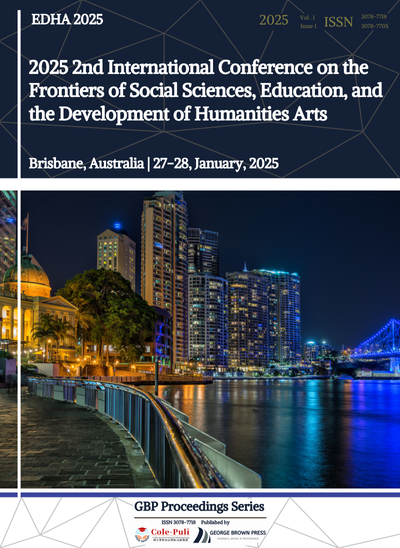Research on the Training Mode of Electronic Information “Novel Engineering” Talents Based on “Transversal Competencies”
DOI:
https://doi.org/10.71222/3emf4m10Keywords:
novel engineering, electronic information, transversal competencies, talent training modeAbstract
Amid globalization and informatization, this paper addresses the core demand for talents in the new generation of the information technology industry — one of the national strategic emerging industries — by focusing on a training model for electronic information “novel engineering” talents through the enhancement of “transversal competencies”. With “transversal competencies” as the core, we explore the matrix relationship between “transversal competencies” and curriculum system, innovate teaching methods, integrate curriculum resources, build a hierarchical practical training and practice system, empower a multidisciplinary knowledge system and an ideological and political education system by AI, implement the OBE concept, propose a “three-combination” mechanism for teachers, and promote the training of application-oriented high-quality talents.
References
1. Z. Rubene, G. Dimdins, and A. Miltuze, “Sustainable growth of transversal competencies: Exploring the competence rela-tionships among university students,” Educ. Sci., vol. 14, no. 7, p. 677, 2024, doi: 10.3390/educsci14070677.
2. E. Osipovskaya, A. Coelho, and P. Tasi, “Transversal competencies assessment and pedagogical methods for higher education: A literature review,” in Int. Assoc. Manag. Technol. Conf., Cham, Switzerland: Springer Nature, Jul. 2024, pp. 189–197, doi: 10.1007/978-3-031-72486-2_20.
3. G. M. Chans, A. P. Valle-Arce, S. Salas-Maxemín, P. Caratozzolo, and C. Camacho-Zuñiga, “Exploring transversal competen-cies in engineering students through international experiences,” Front. Educ., vol. 9, p. 1457796, Jan. 2025, doi: 10.3389/feduc.2024.1457796.
4. L. H. Niemi, J. Kangas, and M. Köngäs, “Blending pedagogy: Equipping student teachers to foster transversal competencies in future-oriented education,” Front. Educ., vol. 9, p. 1373176, May 2024, doi: 10.3389/feduc.2024.1373176.
5. C. Lechuga-Jimenez, M. B. Barroso, E. Alastor, and J. C. Tójar-Hurtado, “Promoting social and blue entrepreneurship and sustainability skills in higher education by transversal competencies,” Cogent Educ., vol. 11, no. 1, p. 2309412, 2024, doi: 10.1080/2331186X.2024.2309412.
6. Y. Blanco-García, R. M. Serrano, and O. Casanova, “Toward a transversal education model: A review of digital and artis-tic-musical competencies (2014–2024),” Arts Educ. Policy Rev., pp. 1–15, 2025, doi: 10.1080/10632913.2025.2459917.
7. P. Altaba Tena and J. A. García-Esparza, “Advancing transversal competencies in engineering and architecture: Integrating GIS and related tasks in multidisciplinary education,” in Teach. Innov. Archit. Build. Eng.: Challenges 21st Century, Cham, Switzer-land: Springer Nature, 2024, pp. 327–342, doi:10.1007/978-3-031-59644-5_19.










